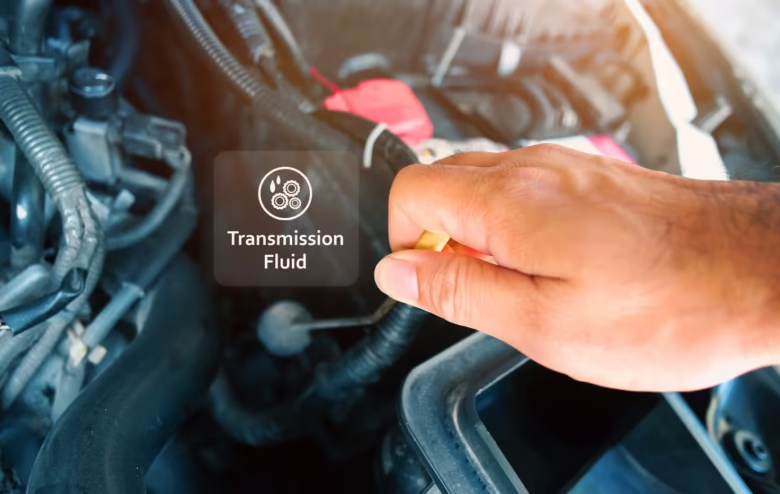Changing the transmission fluid is an essential part of vehicle maintenance that ensures the smooth operation of your car’s transmission system. Regular fluid changes can extend the life of your transmission and keep your car running efficiently. While many car owners opt to have a mechanic perform this task, changing your transmission fluid yourself can save you money and give you the satisfaction of maintaining your vehicle.
In this guide, we’ll walk you through each step of the DIY transmission fluid change process, breaking down the tasks in a way that’s easy to understand, even for beginners. By the end of this guide, you’ll have the knowledge and confidence to tackle this important maintenance job yourself.
Why Change Transmission Fluid?
Before jumping into the process, it’s essential to understand why changing transmission fluid is crucial.
Transmission fluid acts as a lubricant for the moving parts within the transmission system. It helps prevent overheating, reduces friction, and ensures smooth shifting of gears. Over time, the fluid can become dirty and lose its effectiveness, leading to transmission problems such as slipping, overheating, or rough shifting. Changing the fluid at regular intervals prevents these issues and helps maintain the health of your transmission.
Tools and Materials You’ll Need
Before you start, make sure you have all the necessary tools and materials to complete the job. Here’s what you’ll need:
1. Transmission Fluid
This is the most important component of the fluid change. Ensure you’re using the correct transmission fluid type for your car, as specified in your vehicle’s owner’s manual. There are different types of transmission fluids (e.g., automatic, manual, CVT), so using the wrong one can damage your transmission.
2. Transmission Fluid Pump (if needed)
If your car has a sealed transmission, you might need a fluid pump to add the new fluid, as the fill hole may be difficult to reach. A pump makes this task easier.
3. Drain Pan
You’ll need a large drain pan to catch the old transmission fluid as it drains out of the transmission pan.
4. Socket Wrench Set
A socket wrench is essential for removing the bolts from the transmission pan. Ensure you have the correct size socket to fit the bolts.
5. Funnel
A funnel is necessary to help pour the new transmission fluid into the fill hole without making a mess.
6. Gasket or RTV Sealant
When removing the transmission pan, you’ll need a new gasket or RTV (room temperature vulcanizing) sealant to ensure a proper seal when reinstalling the pan. Check your vehicle’s specifications to determine whether a gasket or sealant is required.
7. Jack and Jack Stands
You’ll need a jack to lift the vehicle, and jack stands to safely secure it in place while you work underneath the car. Make sure to place the vehicle on a flat surface for safety.
8. Gloves and Safety Glasses
Transmission fluid can be messy, so gloves will protect your hands. Safety glasses are recommended to prevent fluid from splashing into your eyes.
Step 1: Prepare the Vehicle
Before you begin working on your car, take a few preparatory steps to ensure everything goes smoothly.
1. Park on a Level Surface
Park your car on a flat, level surface to ensure that the transmission fluid drains evenly. If your car is on an incline, the fluid may not drain properly.
2. Engage the Parking Brake
Always engage the parking brake before lifting the car. This ensures that the vehicle doesn’t move while you’re working on it.
3. Raise the Vehicle
Using a jack, carefully raise the front of the car and support it with jack stands. Make sure the car is securely elevated before you start working underneath it.
4. Remove the Wheels (Optional)
Some vehicles may require the removal of the front wheels to access the transmission pan or drain plug. If necessary, use a lug wrench to remove the wheels.
Step 2: Locate the Transmission Pan
The transmission pan is where the old fluid is stored, and it’s typically located underneath the vehicle. It may be necessary to consult your owner’s manual to locate it precisely, but it’s usually a large metal pan with bolts around the edges.
1. Identify the Transmission Pan
For automatic transmissions, the pan is often the largest, flat metal pan on the underside of the vehicle. It may have a rectangular or square shape and can be black or silver depending on your vehicle’s make and model.
2. Remove the Transmission Pan Bolts
Using your socket wrench, begin loosening the bolts around the edges of the pan. It’s recommended to remove bolts along one side first to create a small gap for the fluid to drain. Do not remove all the bolts immediately, as this may cause the pan to drop suddenly and spill fluid everywhere.
3. Be Ready for Fluid to Drain
Once you’ve loosened enough bolts, gently pry the pan downward. Be prepared for the transmission fluid to start draining out. Make sure your drain pan is positioned underneath to catch the fluid.
Step 3: Drain the Old Fluid
Now that the pan is loose, the next step is to drain the old fluid.
1. Let the Fluid Drain Completely
Allow the transmission fluid to drain completely into your drain pan. This may take some time, as transmission fluid can be thick and viscous. Be patient during this step to ensure that as much old fluid as possible is removed from the transmission.
2. Inspect the Fluid
As the old fluid drains, take a moment to inspect its color and consistency. Fresh transmission fluid is usually red or pink, while old fluid tends to turn dark brown or black. If you notice a burnt smell or metal shavings in the fluid, this could indicate internal transmission damage, and you should consult a professional mechanic.
3. Clean the Pan
Once all the fluid has drained, clean the transmission pan thoroughly with a rag. You may also want to use brake cleaner to remove any built-up grime or sludge. A clean pan ensures that no contaminants are reintroduced into the transmission when you reinstall it.
Step 4: Replace the Filter (Optional)
Some vehicles have a transmission filter that helps catch debris and contaminants in the fluid. If your car has a filter, it’s a good idea to replace it at this point.
1. Locate the Filter
The filter is usually located inside the transmission pan or attached to the transmission itself. It may be secured with screws or bolts.
2. Remove and Replace the Filter
Remove the old filter and replace it with a new one. Be sure to align it properly and secure it in place. This is an important step, as a clogged filter can lead to poor fluid flow and transmission problems.
Step 5: Reinstall the Transmission Pan
Once the old fluid has drained and the filter (if applicable) has been replaced, you can reinstall the transmission pan.
1. Apply a New Gasket or RTV Sealant
If your vehicle uses a gasket, install a new gasket on the transmission pan. If your vehicle requires RTV sealant, apply a thin layer around the pan’s edge. Ensure the gasket or sealant is positioned correctly to prevent leaks.
2. Reinstall the Pan
Carefully position the transmission pan back into place, ensuring it aligns with the bolt holes. Tighten the bolts evenly to secure the pan. It’s important not to overtighten the bolts, as this could cause the pan to warp or crack.
Step 6: Add New Transmission Fluid
With the pan reinstalled, it’s time to add the new transmission fluid.
1. Locate the Fill Plug
The fill plug is usually located on the side of the transmission, but its location may vary depending on the make and model of your car. If you’re unsure, consult your vehicle’s owner’s manual for guidance.
2. Use a Funnel to Add Fluid
Using a funnel, begin adding the new transmission fluid into the fill hole. Refer to your owner’s manual for the exact amount of fluid needed. It’s crucial not to overfill or underfill the transmission, as this can lead to poor shifting or transmission damage.
3. Check the Fluid Level
After adding the fluid, use a dipstick (if your vehicle has one) to check the fluid level. If your car doesn’t have a dipstick, you may need to use a pump to fill the transmission fluid until it begins to drain slightly from the fill hole. This indicates that the correct fluid level has been reached.
Step 7: Test the Fluid Level
After adding the new fluid, it’s important to check the level and ensure everything is working correctly.
1. Start the Vehicle
Start the car and let it run for a few minutes. Shift the transmission through all the gears (P, R, N, D, etc.) to allow the new fluid to circulate properly.
2. Recheck the Fluid Level
With the engine running, recheck the fluid level again. Add more fluid if necessary, but avoid overfilling.
Step 8: Clean Up and Test Drive
Once everything is reassembled and the fluid is topped off, you can clean up the area and take the car for a short test drive.
1. Check for Leaks
During your test drive, pay close attention to the transmission area for any signs of leaks. If you notice any fluid dripping, stop the vehicle and inspect the pan bolts and gasket for proper sealing.
2. Monitor the Transmission Performance
After the test drive, check how the car is shifting. If you experience any unusual behavior, such as slipping or jerking, it could indicate that something went wrong during the fluid change process, and you may need to consult a professional mechanic.
Conclusion
Changing your transmission fluid can seem intimidating at first, but with the right tools and a little patience, it’s a manageable task that can save you money and help maintain the health of your vehicle’s transmission. Regular fluid changes are essential to ensure smooth shifting and prevent costly repairs down the road. Always refer to your vehicle’s manual for specific guidelines and fluid requirements, and take your time to do the job properly.




